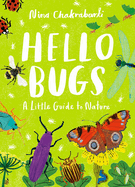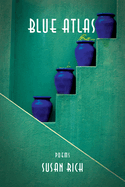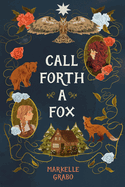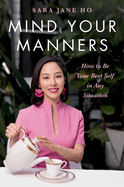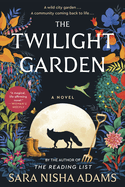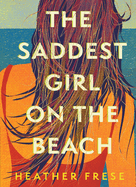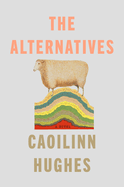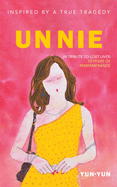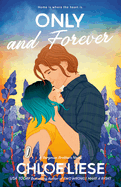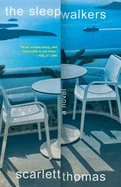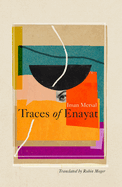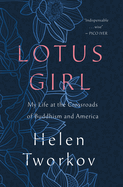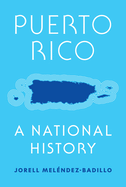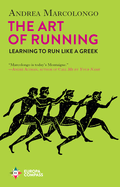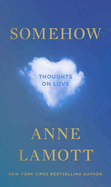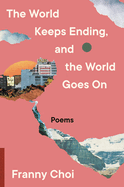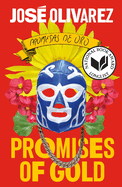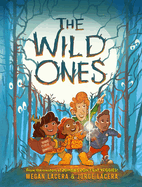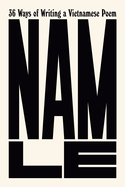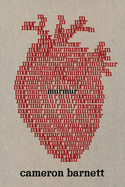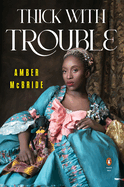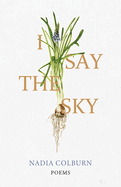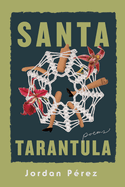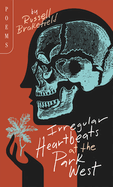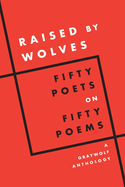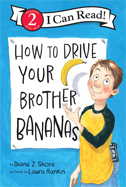Week of Friday, April 19, 2024
This week we spotlight poets, nature, and the nature of poetry with reviews for Blue Mimes by Sara Daniele Rivera, whose poems "play with beginnings and endings and inverted repetitions... as they dance between grief and healing"; and You Are Here: Poetry in the Natural World, an anthology compiled by U.S. Poet Laureate Ada Limón that gives readers "a chance to revel in the sublime and ineffable qualities of both nature and poetry... as an act of communion, a balm for difficult times." Plus, we look at Nina Chakrabarti's picture book Hello Bugs: A Little Guide to Nature, where "insects of all shapes and shades stud the pages like jeweled brooches."
In celebration of National Poetry Month, we offer "An Invitation to All" as two of our reviewers go deep on what reading poetry means to them and how they each "decided poetry was special" for themselves.
The Twilight Garden
by Sara Nisha Adams
Sara Nisha Adams's second novel, The Twilight Garden, is a tender exploration of growth, loss, and the community that forms around a London backyard garden. With dual timelines centered on the same street in Stoke Newington, the narrative follows two sets of neighbors (decades apart) who share the garden space, gradually learning to care for both their plants and one another.
In 2018, Winston struggles with depression and the erosion of his relationship with his partner. Haughty Bernice moves in next door and needles Winston about the garden, finding fault with it (and with Winston) on multiple fronts. Winston, partly to spite her, begins restoring the overgrown space. But he soon develops a passion for it, which leads to his making tentative connections in the neighborhood. When someone starts putting mysterious flyers through his letterbox, Winston learns about Alma and Maya, two women who nurtured the garden together in the 1970s and opened it up to their neighbors. Adams (The Reading List) sensitively portrays the joys and trials faced by both sets of neighbors, including Maya's transition from Kenya to London and Bernice's struggles with single motherhood. Eventually, the novel's timelines intersect, leading to unexpected but satisfying outcomes for multiple people associated with the garden.
Full of quiet scenes in the garden itself, small daily acts of tending, and visits from mischievous foxes, The Twilight Garden is a tribute to what can grow in community spaces, given the chance: not just tomatoes and sweet peas, but compassion, connection, and love. --Katie Noah Gibson, blogger at Cakes, Tea and Dreams
Discover: Sara Nisha Adams's second novel is a tender exploration of growth, loss, and the community that forms around a shared garden space in London.
The Saddest Girl on the Beach
by Heather Frese
Heather Frese reintroduces the inspiring friendship of the young women from her engaging debut, The Baddest Girl on the Planet, in the equally charming The Saddest Girl on the Beach, as the friends bravely face life-altering challenges together.
Her mood as gray as the North Carolina sky during the off-season, 19-year-old Charlotte arrives at her best friend's family inn seeking peace after her father's recent death. Friends since childhood, Charlotte and Evie have an easy rapport, referring to each other as "my anchor." Their witty repartee lends a light tone to their reunion on the Outer Banks, in spite of their situations: Charlotte is secretly self-harming, finding that the "bite of physical pain" distracts her from grief, while Evie is struggling with how to respond to an unplanned pregnancy. Neither circumstance is easily resolved, but in Charlotte's months at the Pamlico Inn, the young women rely on their friendship to see them through their crises.
Evie's family, including wise and crusty Aunt Fay, are endearing supporting characters, and the Cape Hatteras setting is a vivid presence. Charlotte exchanges text messages composed of metaphorically resonant quotations from a book called How to Read a North Carolina Beach with Michael, another childhood friend, who is visiting the inn to study ocean currents. Their budding romance suggests that Charlotte might heal from her grief. In a novel replete with love and understanding, even an imminent hurricane feels like a manageable threat, and a climax that sees "the ocean churned a deep gray green" resolves with both young women finding peace in hard-won and hopeful choices. --Cheryl McKeon, Book House of Stuyvesant Plaza, Albany, N.Y.
Discover: Two young women reunite at a North Carolina inn, where their lifelong friendship sustains them through life-altering crises.
The Alternatives
by Caoilinn Hughes
Any list of fine young Irish novelists working today must include Caoilinn Hughes, whose third novel in only six years, The Alternatives, is yet another example of her gift for illuminating the dark places in the lives of dysfunctional, but deeply sympathetic, families.
Hughes (Orchid & the Wasp; The Wild Laughter) takes as her subject the four Flattery sisters. Three are PhDs and college professors: Olwen, an earth scientist at the University of Galway who's driven by her concern over climate change; Rhona, a political scientist at Trinity College Dublin; and Nell, the youngest, a struggling adjunct philosophy professor at three colleges in Connecticut. The fourth, Maeve, is a celebrity chef and cookbook author living on a houseboat in London.
Rhona, Maeve, and Nell unite when Olwen disappears on her bicycle one rainy October evening, leaving behind her partner and his two young sons. They track her to a farmhouse in the north of Ireland, where she's established a life off the grid as her reaction to onrushing environmental destruction, and it's there that the quartet excavate some of the remains of their collective past, including their shared grief over the deaths of their parents when they were teenagers.
But as Hughes reveals in a story that daringly features a two-act drama amid its prose narrative, the other Flattery women, all now in their 30s, are dealing with equally vexing present-day problems. In Hughes's assured hands, the Flattery sisters, a "faulty batch" in all their charming chaos, are vivid and appealing characters in this bighearted, wise, and frequently sharply funny novel. --Harvey Freedenberg, freelance reviewer
Discover: This novel about four Irish sisters considering their pasts and pondering the future showcases the author's gift for illuminating the dark places in dysfunctional, but deeply sympathetic, families.
Unnie
by Yun-Yun
In Unnie, Yun-Yun adapts a harrowing tragedy into an indelibly haunting family drama. Grounded in specific details, the novel memorably presents a universal story about the overwhelming effects of sudden loss. On April 16, 2014, the South Korean ferry MV Sewol sank while traveling from Incheon to Jeju. Out of 476 passengers--most of whom were high school students and teachers on a school field trip--304 died. The Park family, who are the novel's protagonists, are fictional, but were "created from an amalgam of true stories of the victims' families."
The titular Unnie (Korean for "older sister") is the Parks' eldest daughter, Mi-na, who was one of the teachers among the victims. Her sister, Yun-young, is the novel's primary narrator. Unnie moves back and forth in time as Yun-young reconstructs details of Mi-na's life. Mi-na, who "never did a thing that would worry [their parents]" found fulfillment as a teacher, despite having once "hated school." The family's grief over her sudden death is exacerbated by the failures that follow, including lack of rescue efforts, mendacious reporting, and the politicization of human loss. That Mi-na's is one of nine bodies never recovered makes peace impossible.
Originally published in 2022, Unnie has been revised and republished to mark the 10th anniversary of the Sewol ferry disaster. Yun-Yun, a pseudonym, is also the nickname Mi-na bestowed on Yun-young as armor against the taunts she experienced during the family's five years in the U.S., a connection that underscores the veracity of this fiction. Yun-Yun writes with transparent empathy and never devolves to maudlin exaggerations or suffocating blame. Her storytelling embodies hope, insistently and poignantly channeling "remembrance and sympathy." --Terry Hong
Discover: Yun-Yun commemorates the victims of South Korea's Sewol ferry disaster with an indelible, fictionalized account of one family's harrowing experiences of loss.
Mystery & Thriller
The Truth About the Devlins
by Lisa Scottoline
A solid legal thriller and an intense family drama smoothly converge in mystery author Lisa Scottoline's The Truth About the Devlins.
The wealthy Devlins' devotion to one another and the law began with married attorneys Paul and Marie, whose successful Philadelphia firm now includes their grown children John and Gabby. The Devlins are "not a family," John's wife, Nancy, observes, so much as "a force." TJ, the youngest Devlin son, also works at the firm as an investigator, but this "recovering alcoholic" who spent a year in prison is his family's only nonlawyer. Self-deprecating TJ knows that the Devlins consider him a "charming disappointment"; he takes his work seriously, but his family considers his position "a do-nothing job" to keep him out of trouble. TJ is shocked yet willing to help when John, "the Most Valuable Devlin," confesses that he has accidently killed a client suspected of embezzlement. The brothers abruptly leave Paul's birthday party (a serious family transgression) to return to the scene of the crime. But they're unable to find the body or the man's car. TJ's attempts to help his brother and prove himself worthy of his family's trust might force the Devlins to choose between their loyalty to the law and their allegiance to each other.
The Truth About the Devlins realistically shows TJ's constant struggle with alcohol and why being sober has become part of his identity. The novel precisely examines family dynamics, showing how hierarchies can shift through the years. Scottoline (Exposed, Loyalty) has a talent for shaping realistic characters that keeps the Devlins' saga intriguing. --Oline H. Cogdill, freelance reviewer
Discover: A wealthy family's devotion to one another and the law are put to the test in this intriguing thriller.
Science Fiction & Fantasy
Catchpenny
by Charlie Huston
The search for a missing girl leads a magical thief to a mysterious doomsday cult and the secret of his wife's death in Catchpenny, an intricate, gritty urban fantasy by Charlie Huston (The Mystic Arts of Erasing All Signs of Death, The Shotgun Rule).
Sidney Catchpenny is a sly, a thief with the ability to travel through mirrors. He steals curiosities imbued with mojo, fuel for magic, but his reputation and talent have declined due to his increasingly persistent depression. An old friend comes to him for help investigating a teenager whose mother insists she's more than missing, she's "gone." The surprising mojo in the girl's room is strong enough to give Catchpenny a "sudden rush of positivity"--and it proves the girl has magical connections beyond what he'd been told. As more of his old acquaintances reenter his life and seem to have a stake in finding the girl, Catchpenny must untangle what a massive multiplayer online game, suicide cults, and a killer with his own face all have to do with the missing girl.
Catchpenny comes to grips with his wife's death as he traverses a shadowy, magical Los Angeles underworld full of rival power players. Huston enmeshes readers so deeply into Catchpenny's perspective that his flaws are only gradually revealed through multiple confrontations with people from his past. Huston likewise slowly metes out details about magic, giving readers what they need to know but never overwhelming the novel's intrigue or the atmosphere. Fans of Richard Kadrey's Sandman Slim series should check this one out. --Kristen Allen-Vogel, information services librarian at Dayton Metro Library
Discover: The search for a missing teenager leads a magical thief to confront his own past in Charlie Huston's Catchpenny, a gritty urban fantasy.
Romance
Only and Forever
by Chloe Liese
Romance author Chloe Liese will melt even the coldest heart with Only and Forever, the sweet and steamy romantic conclusion to her long-running Bergman Brothers linked series.
Avid romance reader Viggo Bergman believes in happy endings so deeply that he's opening his own bookstore that will specialize in romance books. When the sophisticated and chilly Tallulah Clarke, Viggo's college crush, walks back into his life with a bad case of writer's block and in need of somewhere to live, the two strike up an agreement: they will help each other with their struggling professional ventures and become roommates--as long as they can keep their hands off each other.
Perhaps the most swoonworthy of the Bergman leads, Viggo is romance-reader catnip, with his reckless good looks and love of crocheting bookstore decorations. But Tallulah's more skeptical approach to happily-ever-afters brings the fantasy humorously down to Earth and makes for the perfect opposites-attract chemistry. Liese handles details of Viggo's ADHD and Tallulah's type 1 diabetes with her typical sensitivity. These aspects of both characters add welcome texture to the novel, contributing to a broadening of the romance genre toward a wider scope of love stories. Most delightful of all is how this final book in the series brings the whole colorful cast of Bergmans (and their significant others) back into the fold. With her characteristic joy, tenderness, and generosity, Liese reminds readers why they fell in love with this motley crew to begin with, as well as what it feels like to be part of a loving, chaotic, and perfectly imperfect family. --Alice Martin, freelance writer and editor
Discover: A gentle and charming conclusion to a series filled with sensitive male leads, Chloe Liese's Only and Forever seals the deal with a memorable take on the roommates trope.
The Sleepwalkers
by Scarlett Thomas
Honeymoons may be sullied by hiccups such as rain and travel delays, but few hiccups compare to the nightmare British newlyweds Evelyn and Richard endure on a Greek island in Scarlett Thomas's The Sleepwalkers, an epistolary thriller that throws a gut punch to the concept of marital bliss. The pair should have known they'd have honeymoon problems after their disastrous wedding, where an attendee blurted out Richard's "most shameful secret." Thomas (41-Love: A Memoir) slowly reveals that secret in the long letters that compose the novel, in which Evelyn, an actress and playwright struggling to revive her career, explains to Richard why she left him, and Richard fesses up to atrocious behavior.
Thomas ratchets up the creepiness by introducing shady characters and strange goings-on. The former include hotel owner Isabella, who flirts with Richard but inexplicably hates Evelyn. For the latter? How about items that appear in and disappear from the newlyweds' room, which Isabella insists remain unlocked? Then there's the story Evelyn and Richard hear about the sleepwalkers, a husband and wife who "walked into the sea together" during a storm the previous year. Toss in more suspicious denizens, an icky backstory involving Richard's father, and a film producer who wants to option the sleepwalkers idea, and the pieces are in place for a satisfyingly unsettling adventure. If readers can overlook Evelyn's tendency to write 100-page letters complete with dialogue in quotation marks, they will likely enjoy this ghoulish tale and its revelations. The wedding and honeymoon may have been horrific, but here's a toast to the novel. --Michael Magras, freelance book reviewer
Discover: The Sleepwalkers depicts the world's worst honeymoon, in which British newlyweds on a Greek island encounter strange events that force them to confront issues with their marriage.
Biography & Memoir
Traces of Enayat
by Iman Mersal, transl. by Robin Moger
An Egyptian poet's obsession with the life and death of another Arabic writer are at the center of Traces of Enayat, an exceptional hybrid of memoir and biography by Iman Mersal, translated from the Arabic by Robin Moger. In 1993, Mersal discovered Love and Silence, the only published book written by Enayat al-Zayyat. The novel, published in 1967, four years after Enayat's suicide in her 20s, is the author's "account of her depression and her meditations on the meaning of a life lived in the presence of death." The death was that of her brother, Hisham, in 1950. But many other factors contributed to Enayat's depression, among them the bad marriage for which she sought a divorce; the possibility of losing forever her son, Abbas, as a result; and a major publishing house's rejection of her novel.
In its quiet way, this book is, in part, a detective story. Mersal (The Threshold) travels back to Egypt from her current home in Canada to interview people who knew Enayat and learn why Love and Silence "remained entirely absent from every history of twentieth-century Egyptian and Arabic literature." This beautiful tribute is about multiple struggles for freedom, from writers who want to assert their individuality through their books to the sexism Egyptian women have faced in and outside of the publishing world. Mersal writes of Enayat's journals and her "moments when she doubts her existence will leave any trace at all." Mersal can do little about the tragedies Enayat endured but, with this radiant work, she has lessened the chances of Enayat being forgotten. --Michael Magras, freelance book reviewer
Discover: In Traces of Enayat, an exceptional hybrid of memoir and biography, Egyptian poet Iman Mersal investigates the life of author Enayat al-Zayyat and the circumstances behind her death.
Lotus Girl: My Life at the Crossroads of Buddhism and America
by Helen Tworkov
It took Helen Tworkov until age 80 to write her memoir, but readers of Lotus Girl: My Life at the Crossroads of Buddhism and America will be happy that this quietly influential figure in the transmission of Buddhist thought and practice to the West has lived long enough to share her story in this revealing and intellectually stimulating book.
Tworkov (Zen in America: Profiles of Five Teachers), the child of secular Jewish parents, traces her earliest curiosity about Buddhism to the day in 1963 when she saw a photograph of Vietnamese Buddhist monk Thich Quang Duc self-immolating in protest against the oppression of his fellow Buddhists in that country. After a six-month sojourn in Japan, she spent most of 1966 in Kathmandu, where an itinerant peddler gave her the nickname that provides the book's title.
Tworkov also describes how, in the United States, she helped cultivate practices like meditation that went from being expressions of the counterculture to mainstream acceptance. She played an especially important role on the U.S. Buddhist scene beginning in 1991, when she founded the magazine Tricycle. She started the publication in response to a wave of scandals within Buddhism that involved sexual misconduct, and other forms of bad behavior on the part of highly respected teachers. In addition to educating its readers on Buddhism, it provided an outlet for objective reporting on the Buddhist world.
Helen Tworkov's name certainly is not as widely known as some of modern U.S. Buddhism's more visible progenitors. But when historians write its definitive story, she should receive her proper recognition, and this book will help ensure that happens. --Harvey Freedenberg, freelance reviewer
Discover: In her revealing and long-awaited memoir, a noted U.S. Buddhist describes her circuitous and enlightening life journey.
History
Puerto Rico: A National History
by Jorell Meléndez-Badillo
Jorell Meléndez-Badillo loves Puerto Rico, an island with a complicated relationship to the United States. Not just a beautiful, tropical locale that does not require passports for American visitors, the island has a nuanced political history of conquest and struggles for freedom from imperial rule. Puerto Rico: A National History covers this history with clarity, honesty, and compassion.
Puerto Rico begins with Meléndez-Badillo's personal relationship with the island before taking a chronological journey from its colonization by Spain to its annexation by the U.S. in 1898 during the Spanish-American War to the aftermath of Hurricane María in 2017. Meléndez-Badillo (The Lettered Barriada) condenses more than 500 years of history into 15 tidy chapters, each dedicated to a specific era or ideology. Along the way, he details the major events and personalities that shaped the Puerto Rican government throughout its past without being verbose. Puerto Rico is very well-suited to lovers of political histories.
Despite his love for the island, Meléndez-Badillo isn't afraid to call out its corruption, such as the fact that Governor Pedro Pierluisi's son "owns 88% of all short-term rental properties" in San Juan, the island's most populated city. Meléndez-Badillo also shows how U.S. policies toward Puerto Rico have affected the territory's people and resources, whether via trade and economics or intense munitions testing on the island of Vieques. A great choice for readers of books like How to Hide an Empire, or anyone looking to learn more about modern-day imperialism, Puerto Rico will make readers feel for the island and its people, both those still living there as well as the vast Puerto Rican diaspora. --Alyssa Parssinen, freelance reviewer and former bookseller
Discover: This eye-opening history will make readers reevaluate their perceptions of the United States' relationship with Puerto Rico.
The Art of Running: Learning to Run like a Greek
by Andrea Marcolongo, transl. by Will Schutt
Italian classicist Andrea Marcolongo (Starting from Scratch: The Life-Changing Lessons of Aeneas) surprised herself when she fell in love with running. Marcolongo chronicles her running journey and delves into the ancient Greeks' perspectives on running and physical fitness in The Art of Running, a slim, engaging hybrid of observation, memoir, and philosophy. Drawing ideas from the pantheon of Greek philosophers, Marcolongo muses on the mental toughness required to run, wonders whether running is a "natural" physiological process, and considers the strange mixture of motivations that compel millions of runners worldwide to lace up their shoes every morning.
Marcolongo revisits mythological runners such as Atalanta and historical runners such as Kathrine Switzer, and she explores the triumphs and absurdities of pushing one's body on a run. She admits that running has given her "an accelerated degree in bodily intuition," a greater intimacy with her regular Paris haunts, and a surefire way to improve her mood. Most chapters conclude with a brief, lyrical essay tracing Marcolongo's morning runs along the Seine and her preparations for her first marathon--in Athens, of course.
Faithfully translated by Will Schutt, like much of Marcolongo's work, her thoughtful, dryly witty explorations of ancient and modern running cultures are enjoyable, especially for runners who are also inclined to philosophize. But like many runners, Marcolongo must eventually return to the sport as a physical, daily engagement: "an awakening... [a]nd a sacred promise to keep myself honest." Runners and Grecophiles will relish the chance to accompany Marcolongo on her running journey: to Athens and back again, yes, but ultimately--as all runners know--step by step. --Katie Noah Gibson, blogger at Cakes, Tea and Dreams
Discover: Italian classicist Andrea Marcolongo's engaging memoir weaves together her journey as a runner with the ancient Greeks' historical, philosophical, and cultural perspectives on running.
Psychology & Self-Help
Mind Your Manners: How to Be Your Best Self in Any Situation
by Sara Jane Ho
Sara Jane Ho's Mind Your Manners: How to Be Your Best Self in Any Situation is an engaging guide to improving social fluency in real-life situations and across the digital realm. Ho compares good etiquette to behavioral therapy, explaining that both can enhance mood and boost confidence. Her international upbringing and life experiences in the United States contribute to her nuanced approach to social life, friendships, work, dating, family relationships, and travel in an era of global interconnectivity.
Ho serves as the charming host of the popular Netflix series Mind Your Manners, and her first book continues her show's mission to help people "jump everyday relationship hurdles and politely handle the not-so-polite situations that can cause social shutdown." Contemporary etiquette isn't about which fork to use, she explains, but about cultivating connection. Etiquette is also contextual, so Ho pays special attention to the "microcultures" that readers navigate on a daily basis.
Throughout the book's five sections, Ho shares her secrets to social fluency, the ability to know "what to do anywhere, with anyone, in any situation." In the context of dating, for instance, social fluency means interacting with empathy, "a rapport with another person, a two-way street for communication." Important pointers on digital dating and weddings and a selection of frequently asked questions about love round out the robust section dedicated to the affairs of the heart.
Whether readers simply want to learn how to get someone to stop talking with their mouth full or want to become a full-blown social magnet, Mind Your Manners offers entertaining anecdotes and measured guidance for every level of communal engagement. --Shahina Piyarali
Discover: Mind Your Manners is a charming, internationally influenced guide to cultivating connection and navigating social life, friendships, work, dating, family relationships, and travel.
Body, Mind & Spirit
Somehow: Thoughts on Love
by Anne Lamott
Anne Lamott's 20th book, Somehow: Thoughts on Love, is a tender ode to what holds families, marriages, and communities together. These 10 autobiographical essays, bookended by an overture and a coda, celebrate love in its various forms, such as her fiercely protective care for her son and grandson, her comfortable connection with her husband, and the shared vulnerabilities and quiet acts of service in churches and neighborhoods. Lamott describes parishioners who gave bags of toiletries to people without housing during the Covid-19 pandemic and people who took in Ukrainian refugees, and documents her own attempts at offering practical and moral support for a dying friend.
Lamott (Help, Thanks, Wow; Almost Everything) draws on the personal memories that have fueled many of her works, including her dysfunctional upbringing, her father's death from brain cancer, and her years of alcohol and drug addiction before sobriety (a cycle repeated in her son's life). These subjects surface most explicitly in "Hinges," in which doors are symbolic of shutting others out or welcoming them in. "Up Above" finds the author literally clearing out her attic while metaphorically facing fears. She bravely acknowledges her faults, too, as in "Shelter," which recounts when a mentee turned against her for being judgmental, and in the title essay, which addresses the fallout of a transphobic retweet.
Lamott always hits the sweet spot between self-help and spirituality. She posits that human beings working together (perhaps with divine aid) create miracles, which is why she has hope in spite of the climate crisis. Realistic and reassuring, Somehow is another gem from a reliable guide. --Rebecca Foster, freelance reviewer, proofreader and blogger at Bookish Beck
Discover: The 10 realistic, reassuring autobiographical essays that compose Anne Lamott's 20th book form a tender ode to what holds families, marriages, and communities together.
Poetry
The Blue Mimes: Poems
by Sara Daniele Rivera
Winner of the Academy of American Poets First Book Award, Cuban Peruvian poet Sara Daniele Rivera uses language with artistry in The Blue Mimes, moving from English to Spanish with a lovely musicality. The collection of 27 poems opens with an epigraph in Spanish from Alejandra Pizarnik's "La noche de Santiago." The English translation reads, "Close a wound a bell cannot. A bell cannot close a wound," and this reflexive structure reveals much about Rivera's work. She, too, will play with beginnings and endings and inverted repetitions.
Grief holds this collection together: personal grief over the loss of loved ones, as well as collective grief over Covid-19 and lockdowns, and over political crises such as the attack on the U.S. Capitol or the separation of children from their families at the border. In the acknowledgments, Rivera thanks her dad, even though it is his death that colors this lyrical and searching collection. She recalls how her father, who taught her to draw, insisted that it is "the movement, the searching, that matters." In that searching, she tells him, "I... felt you with me, behind every word." Line drawings by Rivera and her father divide the sections, animating Rivera's poems as they dance between grief and healing.
The book's final poem, "Fields Anointed with Poppies," explores the way loss can live in a person. It also lives in words: "Hasta tenemos dos idiomas para decirlo: we have/ two languages with which to approximate one pain." Despite the pain, the final line--"And a road continues into open space"--is hopeful and, like this collection, full of life. --Sara Beth West, freelance reviewer and librarian
Discover: This collection of 27 poems is bursting with sound and light, even as it reckons with a multitude of griefs, both personal and public.
You Are Here: Poetry in the Natural World
by Ada Limón, editor
U.S. Poet Laureate Ada Limón's You Are Here: Poetry in the Natural World gathers 50 poems by a diverse group of contemporary writers such as Ilya Kaminsky, Jericho Brown, and Donika Kelly, offering readers a chance to revel in the sublime and ineffable qualities of both nature and poetry. In her foreword, Librarian of Congress Carla Hayden explains, "Some of the poems included here contend with the destruction of nature, while others consider its abundance and resilience--and some do both at the same time."
In her introduction, Limón (The Hurting Kind; The Carrying) describes the collection as an act of communion, a balm for difficult times: "We are here at this moment, crucial and urgent, yes, but also full of wonder and awe at every turn." Some poems gesture at climate change, while others address it directly, as in Jason Schneiderman's "Staircase": "And oh my God, are you as exhausted/ as I am from grieving the planet? Tell me what I'm supposed to say/ about the end of the world. Tell me how not to be hysterical every time/ I see what's coming. Every time I see what's here." Where Schneiderman's poem voices fear and fatigue, Joy Harjo's "Eat" invites readers to a feast, an abundance of wild creatures like the "Hungry tree frogs clung to the screen/ Their curled tongues catch anything/ With wings driven to the light." You Are Here slices through the noise and confusion of the day, offering instead a reminder of the healing power of careful attention. --Sara Beth West, freelance reviewer and librarian
Discover: U.S. Poet Laureate Ada Limón has assembled a beautiful anthology of poems that slices through the noise and confusion of the day, offering instead an act of communion focused on the great outdoors.
Blue Atlas
by Susan Rich
Susan Rich's sixth poetry collection, Blue Atlas, is a forthright reckoning with the aftermath of abortion that takes its inventive metaphors from African travel and scientific theories.
Decades after an abortion, the speaker still expresses anger and remorse. "Binocular Vision" addresses the child who never was: "Happy Non-/ Birthday, 31." Like a fractured mirror, the collection showcases fragments of traumatic memory: a breakup with a fiancé in Paris, a sister's accompaniment to the abortion appointment--perhaps even a feeling of coercion by her? "Outline for Freshman Composition" interrogates these motivations, asking, "Did you agree to an abortion to appease a sister?"
The whole collection orbits the abortion, with the 50 poems varying in tone from sorrow to acerbic wit, as in the wordplay in "Arborist / Abortionist" and the absurdity and circumlocutions of "Post-Abortion Questionnaire Powered by Survey Monkey," which takes inspiration from Oliver de la Paz's "Autism Questionnaire." Rich (Gallery of Postcards and Maps) channels Patricia Lockwood in the personification of an abstraction in "The Abortion Question."
Color and repetition make the verse vibrant and hypnotic. Lush descriptions of travel destinations lighten the mood, as in the alliteration of "Medina, Morning" ("Past pomegranate sellers, past hand-pulled wagons"). Food traditions connect to Jewish ancestry when "potato kugel and gefilte fish, strudel and krepla" form "bright lintels into the past." Science inspires some of the figurative language, such as an image of a star map, an extended metaphor involving string theory, and the infinity symbol "where we balance/ on bitter ovals of regret." History is a heavy burden here, but Rich's honest chronicling and tenderly posed what-if questions allay desolation. --Rebecca Foster, freelance reviewer, proofreader and blogger at Bookish Beck
Discover: The 50 poems in this tender collection draw on African travel, Jewish ancestry, and scientific theories as Susan Rich reckons with the aftermath of an abortion decades ago.
Now in Paperback
The World Keeps Ending, and the World Goes On
by Franny Choi
Every poem in Franny Choi's The World Keeps Ending, and the World Goes On has a line--or a few--where readers realize that, yes, this poem is for them. Her third collection is filled with such moments, lines that sing out, grabbing readers by the throat--or by the hand--and holding them there. Sometimes, it comes at the beginning of the poem, as in "Catastrophe Is Next to Godliness," which opens: "Lord, I confess I want the clarity of catastrophe but not the catastrophe./ Like everyone else, I want a storm I can dance in./ I want an excuse to change my life."
Others arrive at the end of the poem, a gut-punch like the lines that close "Good Morning America," a poem of nine, three-line stanzas: "Come in, last year's wreck, rent./ Grief's a heavy planet, and green./ I know better than to call/ each gravity's daughter to my softest cheek./ I know, and I know./ So what?" Each word clacks and bruises against the next, and the enjambment across stanzas forces both a forward rhythm and a pause. It is musical and discordant; it is a thing of beauty and a thing of pain.
Choi's collection is about endings of all sorts, those that happened in the past and those still to come, those that are always already happening. The poems mingle historical despair with alt-historical hope, and always there is family. Dedicated to the author's parents and grandparents, this collection rings with the memories of ancestors, and Choi (Soft Science) calls on them like muses. --Sara Beth West, freelance reviewer and librarian
Discover: The World Keeps Ending, and the World Goes On is an often heavy and always beautiful collection about endings of all sorts.
Promises of Gold
by José Olivarez, transl. by David Ruano
If poetry has taught readers anything over the years, it is that there are countless ways to write a love poem. José Olivarez (Citizen Illegal) demonstrates that truth in Promises of Gold. This collection is tender at times and raucous at others, but it is always about love: love of family, of heritage, of lovers, of food and, perhaps most poignantly, of friends. Olivarez explains in his author's note how he wanted to write a straightforward book of love poems but couldn't: "I'd be ignoring all the contradictions and messiness of the world we live in, all the ways in which love is complicated by forces larger than our hearts. I choose to bring the world and its chaos into these poems."
This collection, divided into 11 sections, is built of rhythmic structures so full of life that they fairly rise off the page. The elongated verses, much like prose poems, with short, punching lines assert an effortless conversational style. The love poems to his homies are brilliant--gentle and unexpected and often hilarious. And the traditional love poems like "Let's Get Married" capture the ordinary wonder of love: "i want to propose/ again & again. on a Wednesday because/ you did the dishes. on a Thursday because/ we woke up next to each other again. say yes./ say less. i'll be on one knee asking you/ to share in the delight of knowing each other." Bilingual readers will appreciate the Spanish translation by David Ruano González. --Sara Beth West, freelance reviewer and librarian
Discover: Promises of Gold is tender at times and raucous at others, but it is always about love: love of family, of heritage, of lovers, of food, and perhaps most poignantly, of friends.
Children's & Young Adult
Hello Bugs: A Little Guide to Nature
by Nina Chakrabarti
A coterie of colorful creepy-crawlies awaits curious readers in the eye-catching, pro-insects nonfiction picture book Hello Bugs: A Little Guide to Nature by author/illustrator Nina Chakrabarti (Hello Fungi).
"Insects live all around us.... There is probably one near you... RIGHT NOW!" Chakrabarti's assertion nestles beneath a dragonfly's grassy perch alongside a living bridge of ants. The text gives overviews of scientific concepts in an approachable, informal tone, then zooms in to highlight specific species and categories. Insects of all shapes and shades stud the pages like jeweled brooches as the author walks readers through the criteria needed to achieve "true bug" status; shows the difference between simple and complete metamorphosis; and explains how to tell apart insect doppelgangers like bees and wasps or butterflies and moths. Weird and wondrous creatures featured also include bioluminescent insects and masters of camouflage. Readers interested in making their own observations can try tips for bug hunting or attract insects to their own yards or stoops with a homemade bug hotel. Less scientifically minded readers may appreciate the spread focusing on insects in folklore.
Chakrabarti's drawings strike a balance between realism and radiant whimsy. She captures the iridescence of dragonfly wings and the feathery softness of a moth's antennae with equal aplomb. Her survey of insects gives a wide assortment of fascinating facts to pique further curiosity. The result is perfect material for enticing young readers to go forth and seek their own multi-legged neighbors, with the caution not to disturb bugs as they lead "rich, extraordinary lives of their own." --Jaclyn Fulwood, youth services manager, Allen County Public Library
Discover: Beautiful bugs dance across the pages of this colorful, jubilant nonfiction picture book.
Dog vs. Strawberry
by Nelly Buchet, illus. by Andrea Zuill
Nelly Buchet and Andrea Zuill (Cat Dog Dog and A Friend Like No Otter) join forces again for a wonderfully silly picture book about the antics of a dog and her strawberry. While dog owners are likely to recognize some of the zaniness exhibited by Dog, every reader--experienced dog person or not--can appreciate the delightful amusement of "the greatest race of all time."
When Dog's human hands her a strawberry, the excitement ignites a case of the zoomies. "Rounding the lamp, it's Dog, spinning out of the turn, spinning still, and yes! Chasing her own tail! Just stunning!" Strawberry "impassive, doesn't take the bait." Dog upends a plant, knocks over a lamp; "Strawberry can't keep up!" A gust of wind and the re-emergence of Dog's human give the small fruit the spotlight long enough to "SPLAT!" under the human's shoe--"DOG WINS!"
The text of the book is lean, but exquisitely chosen, mimicking the breathless, animated tones of a sports commentator; Dog's only line of the story ("AWWWWOOOO!") is a howl from the belly. Zuill's playful ink and digital art perfectly complements the narration and is drawn at Dog's eye level, bringing readers into her territory. Dog's expressions and body positions are true-to-life and evidence of Zuill's intimate understanding of canines. The whimsical fonts and speech bubbles enhance the liveliness of the narration.
The energy and hilarity of Dog vs. Strawberry might not make it the best bedtime story, but that should not stop those with budding readers from racing out to find a copy of this winning picture book. --Jen Forbus, freelancer
Discover: A playful dog's breathtaking entertainment with a strawberry makes for a marvelously comical race.
Call Forth a Fox
by Markelle Grabo
In her debut novel, Call Forth a Fox, Markelle Grabo remakes the classic "Snow White, Rose Red" fairy tale into an imaginative fantasy affair, filled with faeries, animal transformations, and family secrets. "Auburn-haired" Ro and "wheat-blonde" Eirwyn are sisters who were raised on their father's stories of the faeries inhabiting the western wood. Now that their father has died, though, their mother plans to move the family from the edge of the wood to the much larger town of Poppy. Ro is resistant to and afraid of the upcoming change and spends time in the western wood to comfort herself--there she is able to put off the inevitable and remind herself of time spent with her father. One of these times, Ro puts herself between a bear and the fox it is hunting, unwittingly stepping into the affairs of the fairies and accidentally ensnaring Eirwyn alongside her. As Ro and Eirwyn work to disentangle a set of faerie curses, they learn more about their father and his own connections to the faerie world.
Grabo's evocative fairy tale is a wonderful exploration of what it means to discover oneself, to learn one's true desires, and to embrace both fully. Twists on fairy-tale tropes update the genre while highlighting different ways to find both love and community; instead of having her protagonists search for princes or engage in sisterly rivalry, Grabo focuses on the strength that comes with working together. Call Forth a Fox is a beautifully layered construction of identity that opens the fairy-tale space to people who may not have seen themselves represented before. --Michelle Anya Anjirbag, freelance reviewer
Discover: A beautiful twist on the "Snow White and Rose Red" fairy tale, centering the discovery of family legacies, sisterhood, and embracing one's true self.
The Wild Ones
by Megan Lacera and Jorge Lacera
Megan Lacera and Jorge Lacera's sophomore picture book, The Wild Ones, is as inclusive and endearing as their much-praised 2019 debut, Zombies Don't Eat Veggies.
All Valentina's life, "the Wild Oaks apartment building has been home." Valentina's best friends Jasmine, Andy, and Xander also live in Wild Oaks, hence their group name: the Wild Ones. The Wild Ones are "obsessed with monsters," specifically the monster they believe is lurking in a cave deep in the nearby Steelburg forest. Colombian Valentina believes the monster is La Tunda; Haitian Xander thinks she's Loogaroo; Irish Andy is convinced she's a Banshee; and Indian Jasmine is sure the monster is the ghost Vetal. But one Saturday morning, the kids hear their grown-ups discussing a "monster-size nightmare": developers are looking to destroy Wild Oaks. The Wild Ones spring into action to save their home and decide to find the monster in the forest in hopes it will help them "scare away the developers for good."
Jorge Lacera's brightly colored digital illustrations, featuring both panels and full-page spreads, are dynamic and energetic, keeping up the excitement and fast pace. Word boxes and speech bubbles help make the graphic novel visually comprehensible to young readers. The Laceras paid attention to detail in both text and illustration; the endpapers, done in a retro, comic book-art style, work as an introduction to each monster. Ultimately, the Wild Ones save the building and get to meet their favorite monsters. Turns out, there wasn't one heroic monster in the forest--there were four. --Kharissa Kenner, children's librarian, Bank Street School for Children
Discover: The Wild Ones is an inclusive and endearing graphic novel for young readers.
The Prickletrims Go Wild
by Marie Dorléans, transl. by Polly Lawson
Following The Night Walk and Our Fort, Marie Dorléans has found another way to use a picture book to promote the counterintuitive coziness of the great outdoors. In the glorious The Prickletrims Go Wild, translated from the French by Polly Lawson, a family learns that it's not just about stopping to smell the flowers: it's also about stepping aside and letting the flowers do their thing.
The Prickletrims--that's Mr. and Mrs. Prickletrim and daughter Suzette--"ADORED nature.... Just as long as it was well ordered and properly managed." One summer day, when Mr. and Mrs. Prickletrim's micromanaging of their gardener becomes unbearable ("They closely inspected every snip, prune and mow"), the man quits, pronouncing what sounds to the Prickletrims' ears like a curse: "Now, my beloved garden, grow and bloom as you wish, in beautiful abundance!" Untended, the Prickletrim garden goes berserk, and the senior Prickletrims do what they can to tame it, but to no avail. It takes Suzette's interpretation of birdsong--"It sounds like they're saying: Nature is beautiful, wild and free!"--to convince her parents to accept the new normal: a jungle of wonderfully chaotic blooms.
In her digitally tweaked graphite pencil art, Dorléans reserves color--hers is a summery palette, of course--for the book's gardens and greenery; the other black-lined images are largely color-free and heavily patterned, giving these illustrations the look of pristine coloring-book pages. Forewarning: young readers swept up in the spirit of The Prickletrims Go Wild may be inclined to pick up their crayons and go a little wild themselves. --Nell Beram, freelance writer and YA author
Discover: In this glorious picture-book ode to nature, a family learns that it's not just about stopping to smell the flowers: it's also about stepping aside and letting the flowers do their thing.
Poetry Month
Reading Poetry
Reading Poetry: An Invitation to All
Rebecca Foster and Sara Beth West are avid readers and regular contributors of book review coverage for Shelf Awareness. In honor of April as National Poetry Month, we put these two poetry lovers in conversation with each other to talk about their reading habits, what first drew them to the form, how they tend to approach each new collection, who some of their favorite poets are, and more!
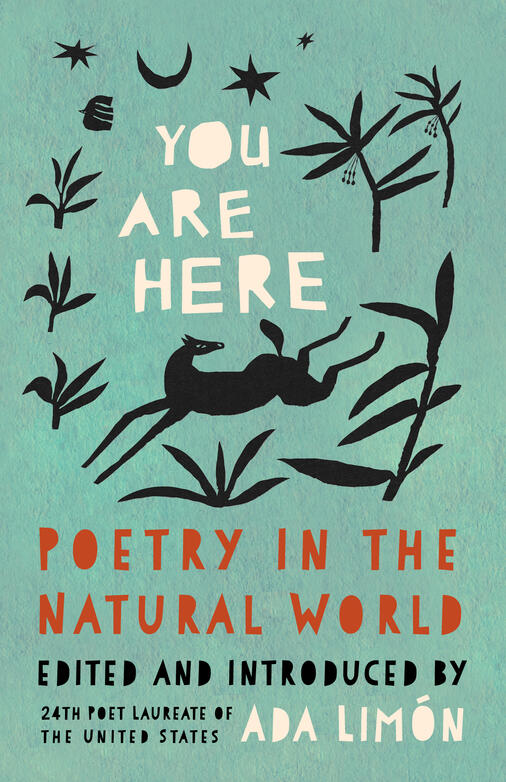 Rebecca Foster: It's so nice to virtually "meet" you, Sara Beth! It was an honor to be asked to contribute some thoughts and recommendations to this year's Poetry issue. I'm curious, have you always been a poetry reader, or did you come to the form over time?
Rebecca Foster: It's so nice to virtually "meet" you, Sara Beth! It was an honor to be asked to contribute some thoughts and recommendations to this year's Poetry issue. I'm curious, have you always been a poetry reader, or did you come to the form over time?
Sara Beth West: I decided poetry was special when I was introduced to "anyone lived in a pretty how town" by e.e. cummings. I was young and in awe, hearing someone play with language in ways I hadn't realized were possible. How about you?
Foster: I remember coming across Shel Silverstein in elementary school, and then Elizabeth Barrett Browning and Langston Hughes in high school. But my strongest early poetry memory is of memorizing Edgar Allan Poe's "The Raven" in middle school. A friend and I took on the challenge and, teacher's pets that we were, recited all 18 stanzas in front of our class.
West: I love that image of middle school you reciting "The Raven," and I'm glad it didn't make you say "Nevermore!" to poetry after that. I'm afraid the way we handle poetry in schools is one of the reasons it's not more popular among adults, even those who consider themselves readers. But you're so right to note the various entry points to poetry and the ways it offers a lifetime's worth of discovery.
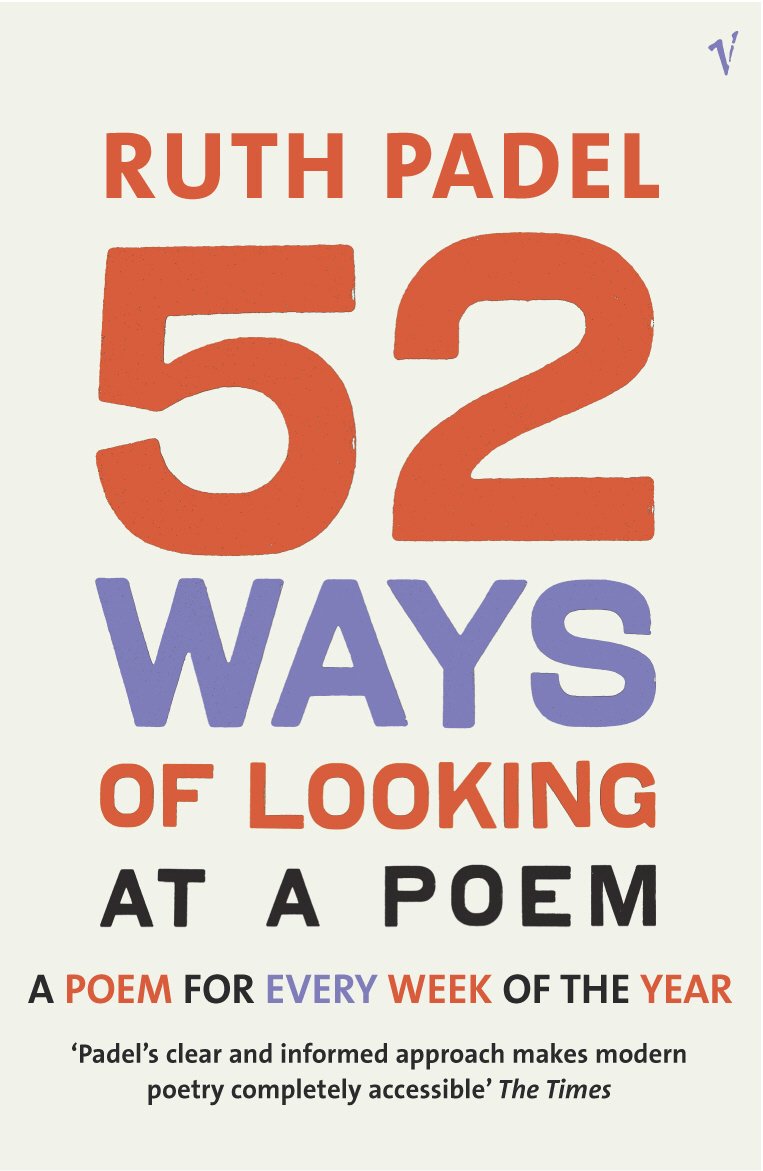 Foster: People seem afraid of poetry: they think they won't understand it, or don't have the vocabulary to describe it. I've picked up the terminology gradually over the years that I've been a poetry reader. Reading 52 Ways of Looking at a Poem by Ruth Padel, in particular, helped me to develop strategies for noticing how a poem works. But I feel like it's primarily an emotional response?
Foster: People seem afraid of poetry: they think they won't understand it, or don't have the vocabulary to describe it. I've picked up the terminology gradually over the years that I've been a poetry reader. Reading 52 Ways of Looking at a Poem by Ruth Padel, in particular, helped me to develop strategies for noticing how a poem works. But I feel like it's primarily an emotional response?
West: Poetry definitely requires a different sort of attention. I try to approach each poem like a complete meal. Some meals are less suited to my taste; others, though, are like brilliant tasting menus, full of unexpected turns and delicious ideas, and at the end, I sit back and reflect on just how good it was, how good it can be. For that reason, I don't love to shovel poems in, one after the other. I take lots of breaks when I'm reading a collection of poems.
Foster: I agree. I think poetry is best read slowly and in silence. A collection can be just 50 pages yet take me hours to read because I have to go back and read particular poems multiple times. Do you read collections in order or jump around? I always read poems in their published order and wouldn't dream of doing otherwise, but maybe you have a more interesting answer!
West: I think of a collection of poems as somewhat like an album or a really good playlist: the artists assemble the collection in the order they think will have the greatest impact. So yes, I read stand-alone collections in their published order. But I also understand the fatigue that can come from reading poem after poem in a collection. I love it when single poems are dropped between other forms, like when single poems appear in a magazine like the New Yorker, or even the way poems will appear on my social feeds.
Foster: So do you also enjoy hearing from lots of different poets through anthologies?
 West: I do! For instance, U.S. Poet Laureate Ada Limón has edited a collection called You Are Here: Poetry in the Natural World (Milkweed, $25; reviewed in this issue), and it introduced me to a few new poets that I now want to seek out. I also dearly love Pádraig Ó'Tuama's Poetry Unbound: 50 Poems to Open Your World (Norton, $17.99), especially because of the brief reflective essays that accompany each poem. What are your thoughts on anthologies?
West: I do! For instance, U.S. Poet Laureate Ada Limón has edited a collection called You Are Here: Poetry in the Natural World (Milkweed, $25; reviewed in this issue), and it introduced me to a few new poets that I now want to seek out. I also dearly love Pádraig Ó'Tuama's Poetry Unbound: 50 Poems to Open Your World (Norton, $17.99), especially because of the brief reflective essays that accompany each poem. What are your thoughts on anthologies?
Foster: For the most part, I prefer individually authored collections because they feel more intimate: you are spending real time with one voice and viewpoint. But every so often I'll read a poetry anthology, such as the thematic ones released in the U.K. by small indie publisher The Emma Press, or Raised by Wolves (Graywolf, $18), and discover lots of new-to-me poets.
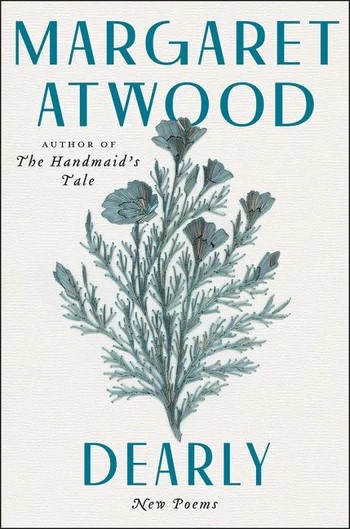 West: Can you think of some poets or collections you would particularly recommend to new poetry readers?
West: Can you think of some poets or collections you would particularly recommend to new poetry readers?
Foster: One of my top recent recommendations has been Dearly by Margaret Atwood (Ecco, $18.99) because it is led by its themes--the poems are generally about what they say they're about, and more material than abstract. She writes about memory, women's rights, environmental crisis, and bereavement. Reading poetry by trusted novelists (like Atwood) and memoirists can be a great way to broaden your experience--Mark Doty, Helen Dunmore, Barbara Kingsolver, James Lasdun, and Patricia Lockwood are some other reliable crossover authors that I've found.
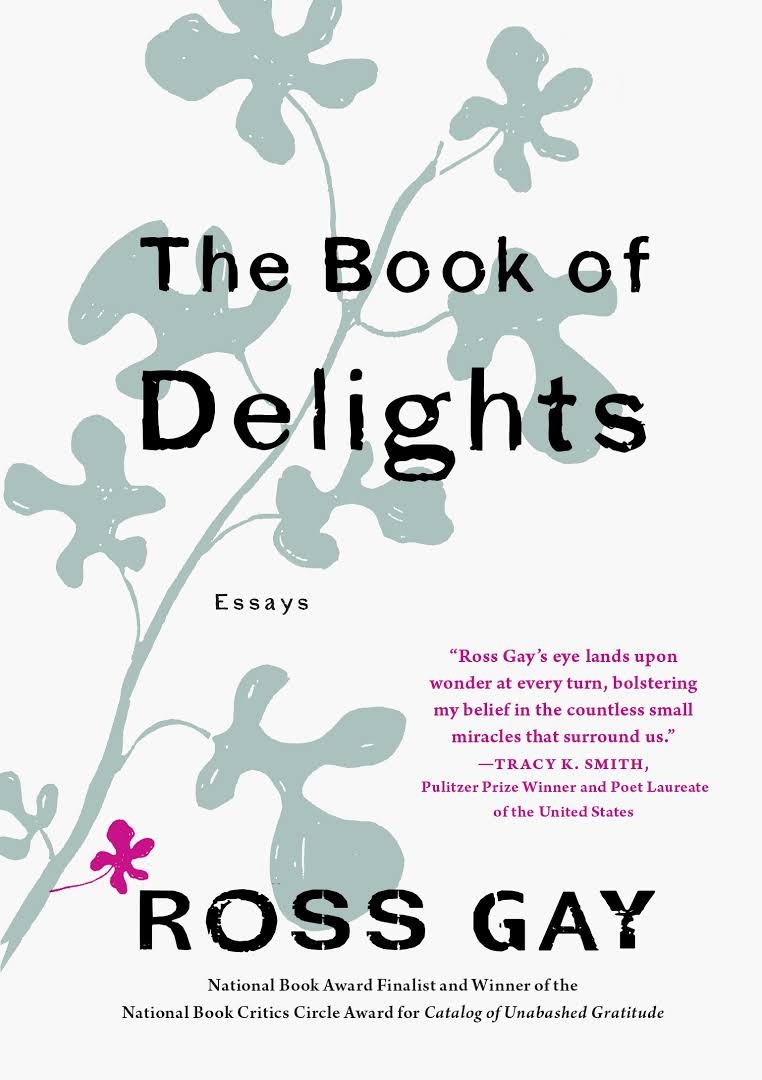 West: Though I love Atwood, I've never read her poetry, so on the list it goes! I mentioned Pádraig Ó'Tuama, and his podcast Poetry Unbound is one of my go-tos for introducing new readers to the form. His voice and affect are perfect, and the short episodes make it possible to approach each one in a mindful and open manner without feeling like you're making a huge investment. Another favorite to recommend is Clint Smith's Counting Descent (Write Bloody, $17); I reviewed his Above Ground (Little, Brown, $27). Oh, and Ross Gay! Many people came to love him through The Book of Delights (Algonquin, $18.99), but his poetry is wonderful.
West: Though I love Atwood, I've never read her poetry, so on the list it goes! I mentioned Pádraig Ó'Tuama, and his podcast Poetry Unbound is one of my go-tos for introducing new readers to the form. His voice and affect are perfect, and the short episodes make it possible to approach each one in a mindful and open manner without feeling like you're making a huge investment. Another favorite to recommend is Clint Smith's Counting Descent (Write Bloody, $17); I reviewed his Above Ground (Little, Brown, $27). Oh, and Ross Gay! Many people came to love him through The Book of Delights (Algonquin, $18.99), but his poetry is wonderful.
Foster: I read The Book of Delights a couple of summers ago! What are some of your other favorite poetry collections of recent years?
West: Christian Wiman is a singular talent with a remarkable mind; though it's not exclusively poetry, his Zero at the Bone (FSG, $30) was one of my favorite titles in 2023. I was awestruck by Ilya Kaminsky's Deaf Republic (Graywolf, $17). And Limón's The Hurting Kind (Milkweed, $24) arrived right on time for me. What about for you?
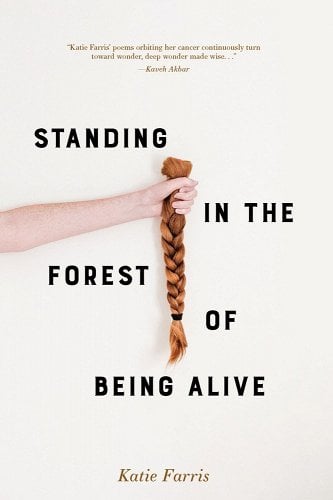 Foster: Pilgrim Bell by Kaveh Akbar (Graywolf, $16) and Lo by Melissa Crowe (University of Iowa, $20) are two that stand out for me. I know that we both loved Standing in the Forest of Being Alive by Katie Farris (Alice James, $18.95) and that we equally admire Wiman's work.
Foster: Pilgrim Bell by Kaveh Akbar (Graywolf, $16) and Lo by Melissa Crowe (University of Iowa, $20) are two that stand out for me. I know that we both loved Standing in the Forest of Being Alive by Katie Farris (Alice James, $18.95) and that we equally admire Wiman's work.
West: Would you say you're drawn in more by a poet's style or by their subject matter?
Foster: The subject matter is usually the immediate attraction (grief and health themes are sure to catch my eye), but if I'm not enjoying the style I know I won't get far. It's almost impossible to define taste in poetry. I enjoy formal approaches and rhyme schemes--sonnets, sestinas, ghazals, pantoums--but am terrible at recognizing them, so I appreciate when poets identify them in the title or an endnote. For Shelf Awareness, I consider four or five poetry collections a month and often reject several within the first few pages. It's hard to predict what will be a successful read for me. I try to read excerpts on a poet's website or Poetry Foundation page before requesting.
West: I do similar reconnaissance before making requests, so my Shelf assignments tend to pay off, especially those that hit in just the right way and become instant favorites. I especially love to come across a debut doing something unique, like Hannah Emerson's The Kissing of Kissing (Milkweed, $16). Perhaps that's what I love most about poetry: it's endlessly adaptable, an invitation to all.
Book Candy
Book Candy
Illustrator Tom Gauld "unveils some exciting new literary genres" for the Guardian.
---
Atlas Obscura showcased "6 badass librarians who changed history."
---
Merriam-Webster looked up "etymologies for every day of the week."
Rediscover
Rediscover: Faith Ringgold
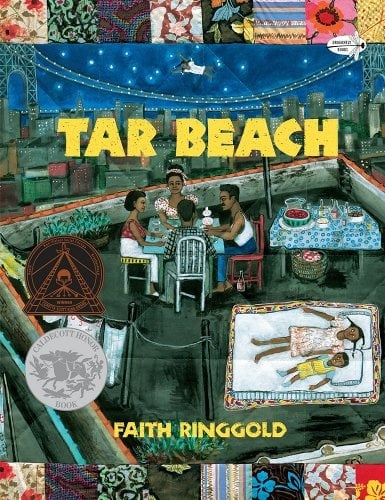 Faith Ringgold, "a multimedia artist whose pictorial quilts depicting the African American experience gave rise to a second distinguished career as a writer and illustrator of children's books," died April 12 at age 93, the New York Times reported. Ringgold "explored themes of race, gender, class, family and community through a vast array of media, among them painting, sculpture, mask- and doll-making, textiles and performance art. She was also a longtime advocate of bringing the work of Black people and women into the collections of major American museums."
Faith Ringgold, "a multimedia artist whose pictorial quilts depicting the African American experience gave rise to a second distinguished career as a writer and illustrator of children's books," died April 12 at age 93, the New York Times reported. Ringgold "explored themes of race, gender, class, family and community through a vast array of media, among them painting, sculpture, mask- and doll-making, textiles and performance art. She was also a longtime advocate of bringing the work of Black people and women into the collections of major American museums."
Classically trained as a painter and sculptor, she began producing political paintings in the 1960s and '70s that explored the highly charged subjects of relations between Black and white people, and between men and women. Critics praised her work from the beginning, but wide renown largely eluded her until midlife, a consequence, she often said, of her race, her sex, and her uncompromising focus on art as a vehicle for social justice, the Times wrote.
Ringgold ultimately became best known for what she called "story quilts": large panels of unstretched canvas, painted with narrative scenes in vivid acrylics, framed by quasi-traditional borders of pieced fabric, and often incorporating written text.
One of her most celebrated story quilts, "Tar Beach," completed in 1988, gave rise to her first children's book, after an editor at Crown Publishers saw the quilt and asked her to transform it into a picture book. Tar Beach was named a Caldecott Honor Book by the American Library Association and was also was honored with the Coretta Scott King Award, presented by the ALA for distinguished children's books about African American life.
Ringgold went on to illustrate more than a dozen picture books, most with her own text, including Aunt Harriet's Underground Railroad in the Sky (1992); her memoir, We Flew Over the Bridge (1995); and If a Bus Could Talk: The Story of Rosa Parks (1999).
"Faith Ringgold opened the door for younger artists--for artists after her, Black artists in particular--to carry their message through these alternative kinds of media," art historian and curator Adrienne Childs told NPR, adding that Tar Beach had been her favorite book to read to her own kids when they were young.
At the end of Tar Beach, the girl tells her little brother that anyone can fly. "All you need," Ringgold wrote, "is somewhere to go that you can't get to any other way."
| Advertisement stories that celebrate us all |
Read what writers are saying about their upcoming titles
How to Drive Your Brother Bananas
|
Pub Date: ISBN: Type of Book: Age Range: List Price: |




